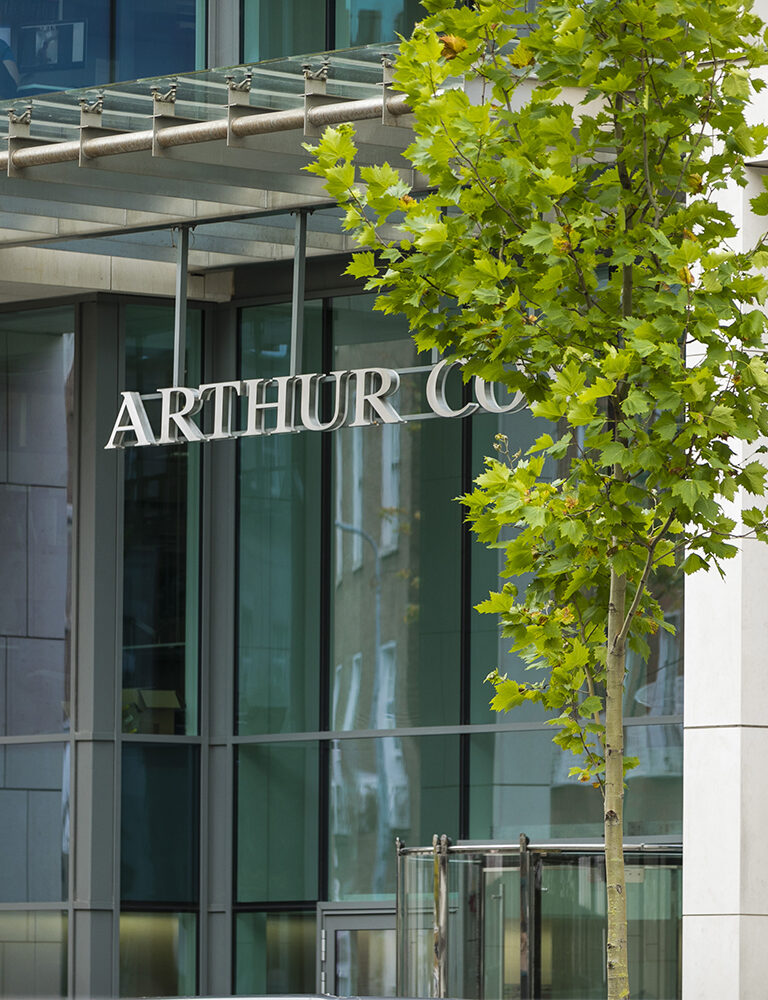
EU provides Legal Framework for Regulation and Decarbonisation of the Gas Sector
The gas regulatory framework has undergone a significant overhaul, as the EU lays the foundation for decarbonisation and further integration of energy markets.
Recast Regulation (EU) 2024/1789 and Directive (EU) 2024/1788 on the internal markets for renewable gas, natural gas, and hydrogen came into effect on 4 August 2024.
The Regulation is directly applicable in Member States from 5 February 2025 (except for certain provisions which apply from earlier dates). The Directive is to be transposed in domestic law by 5 August 2026.
Fundamental regulatory principles are maintained: unbundling of vertically integrated utilities, non-discriminatory third-party access to systems, capacity allocation that facilities competitive and liquid capacity trading, forward network planning and development, and consumer protection. Many of these provisions have evolved from the third Gas Package of 2009.
As anticipated, however, this fourth Gas Package now includes new sections aimed at cutting greenhouse gas emissions and ensuring security of supply. The legislation is intended to enable and facilitate transition towards climate neutrality, through ramp-up of a market for hydrogen and an efficient market for natural gas.
We look at some of the key developments below.
| Terminology Along with the Renewable Energy Directive (“RED”), the new gas legislation aims to increase transparency around gas quality. Renewable gas is biogas as defined in the Renewable Energy Directive (“RED”), including biogas that has been upgraded to biomethane, and renewable fuels of non-biological origin (“RFNBOs”). Low-carbon gas includes low-carbon hydrogen, recycled carbon fuels, and synthetic gaseous fuel. Both low-carbon gas and low-carbon hydrogen have an emission reduction threshold of 70% compared to the fossil fuel comparator for RFNBOs (which is to be developed under the RED). Hydrogen is described as an energy carrier with different features to natural gas in terms of quality, transport means and demand patterns. Enhanced transparency requirements on quality parameters and their development are to contribute to an efficient internal market for hydrogen. Hydrogen quality is defined with reference to standards which will be specified by means of a technical standardisation process by European standardisation bodies. |
Renewable Gas and Low-Carbon Gas
Tariffs: High tariff discounts for renewable gas and low-carbon gas will be applied to: (a) entry points from renewable gas and low-carbon gas production facilities, and (b) capacity-based transmission tariffs at entry / exit points to natural gas storage facilities. The discounts may be derogated from in certain situations, including where they are not necessary because of alternative support mechanisms for scaling-up use of renewable or low-carbon gases.
Firm Capacity: System Operators (“SOs”) will be required to ensure firm capacity for renewable or low-carbon gas production facilities. Producers of renewable gas and low-carbon gas are often connected to the distribution grid, and so SOs will develop procedures and arrangements to ensure reverse flow from the distribution to the transmission network. SOs may still develop alternatives to reverse-flow investments, including smart grid solutions or connection of renewable and low-carbon gas directly to the transmission network.
Third-party access to natural gas infrastructure: Member States will enable the access of renewable and low-carbon gases to the market and infrastructure regardless of whether the production facilities are connected to distribution or transmission networks, taking into account assumptions on the evolution of the production, supply and consumption of natural gas developed under the TYNDP.
Reasons for refusal of access and connection: EU law provides limited reasons for system operators to refuse access or connection to the natural gas or hydrogen system. The new legislation adds that access to the system for renewable gas and low-carbon gas may only be refused subject to provisions described above in the firm capacity paragraph.
There is a climate related derogation from these key obligations: Member States must ensure that TSOs and DSOs can refuse access or connection to natural gas network users, in particular to ensure implementation of the climate-neutrality objective in the EU Climate Regulation. There are, however, essential pre-conditions to allowing SOs to refuse access or connection in these circumstances. The pre-conditions include that the Network Development Plan (“NDP”) must provide for decommissioning of the transmission system or parts of it, and the regulatory authority must have approved the network decommissioning plan. It is also important to be aware that this derogation concerns refusal to connect network users, not final customers.
Decision-making powers regarding the connection of production facilities for renewable and low-carbon gases: The SOs must establish transparent and efficient procedures for non-discriminatory connection of production facilities. Member States can grant biomethane production facilities priority to connect. The TSO cannot refuse economically reasonable and technically feasible connection requests of new production facilities, except under limited conditions.
Cross-border cooperation: TSOs will be required to cooperate to avoid restrictions to cross-border flows due to gas quality differences at interconnection points between Member States. Member States must ensure that diverging technical specifications are not used to restrict cross-border natural gas flows. Where a restriction cannot be avoided, there is a mechanism to regulate and monitor the restriction, with the aim of its ultimate removal.
Hydrogen Infrastructure and Market
Prioritising hydrogen in its pure form: The EU is prioritising the production and use of hydrogen in its pure form and its transportation in a dedicated hydrogen system. The blending of hydrogen into the natural gas system is seen as a last-resort, as it is less efficient compared to using pure hydrogen, and affects the operation of natural gas infrastructure, end-user applications and interoperability of cross-border systems.
Regulated hydrogen infrastructure: The type of regulatory framework that we are used to in the natural gas sector has been developed for pure hydrogen networks. Hydrogen network operators (“HNOs”) must offer their services on a non-discriminatory basis to all network users and publish non-discriminatory congestion management procedures. From 1 January 2033, hydrogen networks will be organised as entry-exit systems. A framework of rules specific to hydrogen provides for quality and EU-wide cooperation and network planning, as well as regional cooperation, including through establishment of a European Network of Network Operators for Hydrogen (“ENNOH”). Member States must ensure the implementation of a system of regulated third-party access to hydrogen networks, based on published tariffs and applied objectively and without discrimination, with refusal of access or connection being allowed only in prescribed circumstances.
Unbundling: Hydrogen transmission network operators (“TNO”) are subject to the same unbundling requirements as natural gas TSOs. However, there are some circumstances in which Member States can decide not to apply those requirements. One is where a hydrogen TNO belongs to a certified natural gas TSO. In that case, the Member State can designate an entity under the sole control of TSO as an integrated hydrogen TNO, unbundled in accordance with the rules on independent transmission operators (“ITOs”) for natural gas.
Tasks: Tasks for HNOs are set out, along with further rules for existing networks, geographically confined networks, interconnectors, and confidentiality of commercially sensitive information.
Separation of regulatory asset bases: Where a TSO, DSO, or HNO provides regulated services for natural gas, hydrogen or electricity, it must maintain separate regulatory asset bases for each of these services and keep unbundled accounts. The intent is to prevent cross-subsidies, and so financial transfers between the regulated services are prohibited. However, there is recognition that subsidising new services may be needed. Member States can allow financial transfers (for a limited period) between regulated services if certain conditions are met, including that the financing of networks through tariffs paid by only the user of that network is not viable.
Inter-temporal cost-allocation: Member States can also allow HNOs to spread the recovery through tariffs of hydrogen network costs over time to ensure that future users duly contribute to initial development costs. This is referred to as inter-temporal cost allocation. Member States can put in place measures, such as a State guarantee, to cover the financial risk of HNOs associated with the initial cost recovery gap arising from this inter-temporal cost allocation.
Hydrogen markets: The Commission can establish a mechanism to support the market development of hydrogen until 31 December 2029. This resembles demand aggregation and joint purchasing and, if successful, longer-term arrangements could be put in place. Member States can ensure liquidity support (including guarantees) for hydrogen under the activities of the European Hydrogen Bank.
Security of Supply
The fourth Gas Package gives a more permanent legislative home to the market intervention we saw following the Russian invasion of Ukraine, in the form of demand aggregation and joint purchasing of natural gas. There are also amendments to Regulation (EU) 2017/1938 on safeguarding security of gas supply, to strengthen solidarity and crisis management mechanisms. Provisions also address cybersecurity risk.
Updating the Third Energy Package
Existing provisions are significantly developed to, for example, further particularise objectives and market principles, and to streamline and expedite authorisations where they are required. Rules relating to consumer empowerment in retail markets are also significantly developed, including on contract rights, billing and switching supplier, protection in relation to phase out of natural gas, comparison tools, active customer participation in the market for natural gas, smart metering, and dispute resolution.
Delegated Legislation, Codes, Guidelines
The Commission is empowered to adopt delegated and implementing acts to establish network codes, common specifications or guidelines across several areas including, for example, specifications for facilitating cost-effective integration of large volumes of biomethane in the natural gas system.
Next Steps
The latest EU Gas Package provides a highly elaborated, forward-looking regulatory framework. Some cross-border mechanisms may be difficult to apply fully in circumstances where a neighbouring state is not an EU Member State. However, there are various provisions, including those governing arrangements with third countries, which may be engaged in this respect.
Ireland is bound by international and EU climate objectives and has set its own highly ambitious decarbonisation objectives. Decarbonisation has already been taken into account for quite some time by the gas system operator in Ireland. It is a welcome step forward that the EU regulatory framework to govern and manage network and market transition is now in place.



